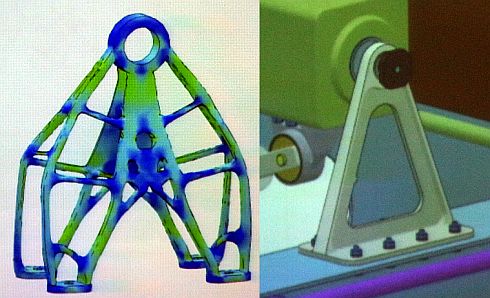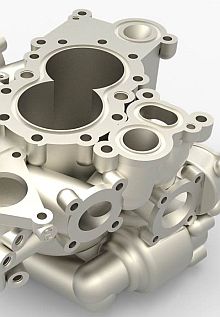Dassault Systemes hopes to get access to the internal components of industrial printers to control the properties of the metal parts. “We hope the hardware manufacturers will open the machines for us”

Dassault Systemes from France plans to revolutionize the production techniques of metal parts, using new software and deep simulation capability. Techtime has learned last week about the plan, during a meeting with Daniel Pyzak, which is one of the leading technological experts of the company.
Pyzak is considered a major expert in the field of production software. In the past 25 years he has led the development of software for production tools, 10 years ago he was appointed manager of CATIA software technical staff of in Europe, and most recently he accepted responsibility for the business development of Dassault Systemes to the field of three-dimensional printing (Additive Manufacturing).
Today he is most interested in the production of metal parts. Unlike the more common plastic printed parts, the metal market demands industrial grade solutions and holds potential for mass production, large scale projects and huge market.
Pyzak: “This market emerged about 7 years ago, when printer manufacturers have begun to develop production capability of steel, aluminum and titanium parts. It is important, because additive manufacturing gives us the ability to produce parts with special shapes that are difficult to produce in standard production processes.”
Very expensive mass

“It means we can produce parts with fairly very low weight, without damaging their mechanical properties and material strength. This feature is very important for many industries, primarily in the aerospace industry. The price of launching 1 kilogram to space today is 20,000-100,000 dollars. It means that weight reduction has tremendous financial implications. The task we have undertaken is to optimize topology of mechanical parts using CATIA software”.
The first optimization product from Dassault Systemes is expected to reach the market before the end of the year. During a meeting with the Israeli Industry experts last week, Pyzak introduced the software and its benefits to the aviation industry.

During the presentation he showed how Dassault Systemes has reduced the total weight of various parts for satellites. The new software analysed the original designs, calculated loads and strsss within the parts, and produced new design guidelines for redesigning. The final result was very different from the original part.
Instead of heavy blocks of metallic volume, the new desing consisted of asymmetrical configurations, very effective but hard to produce using a lathe or CNC machine. On the other hand, a three-dimensional printer very easily deals with the challenge.
Licence to print
But this is only the first step. Now Pyzak is working on a new ambitious project that needs close cooperation of the printer’s manufacturers. Pyzak: “All production consists of three elements: material, product and process. Additive manufacturing of metal parts is based on a laser beam scanning a surface and fusing metal powder, and so builds the product layer by layer.
“By controlling the magnitude and movement of the laser beam, we can produce different Metallurgical properties of the metal. Our simulation software can perform simulation of stress in the molten material and between the layers, and thus discover (and define) the special properties of the material.”
Techtime: To control the laser beam, you need access to the inner mechanism of the printer.
Pyzak: “We are talking at the moment with hardware manufacturers to see if they are ready to open up the machines for us. Our goal is to have the ability to manage the components inside the printers themselves, in order to be able to ensure the quality of production obtained.
“This will also save them the need for post-production tests to verify the quality of the material obtained after printing. Another advantage is in the finished product: It is possible to change the production process while manufacturing the part, and give different metallurgical features to different components within the same part .”
How close are you to reach the goal?
“In 2014 we have acquired the US company Accelrys, which has developed the ability to analyze materials at a molecular level. These people know molecules, crystals, and know how to calculate the properties of the material. We have imaging capabilities, the ability to control machines and a platform that can make the entire process. Now we are negotiating with customers, to define a new standard for three-dimensional printing that will relate not only to the structure of the part manufactured, but also to its production process.”

